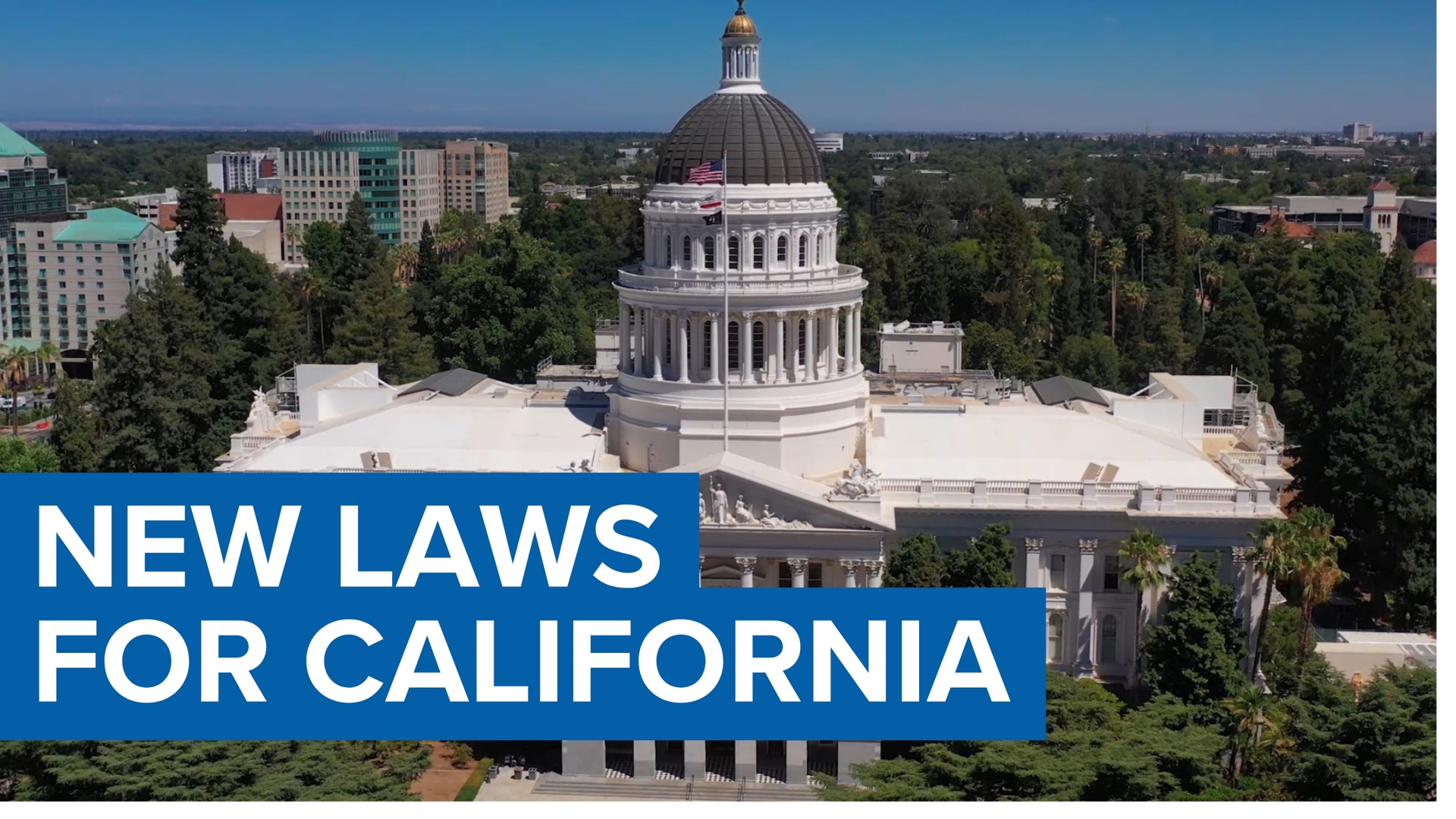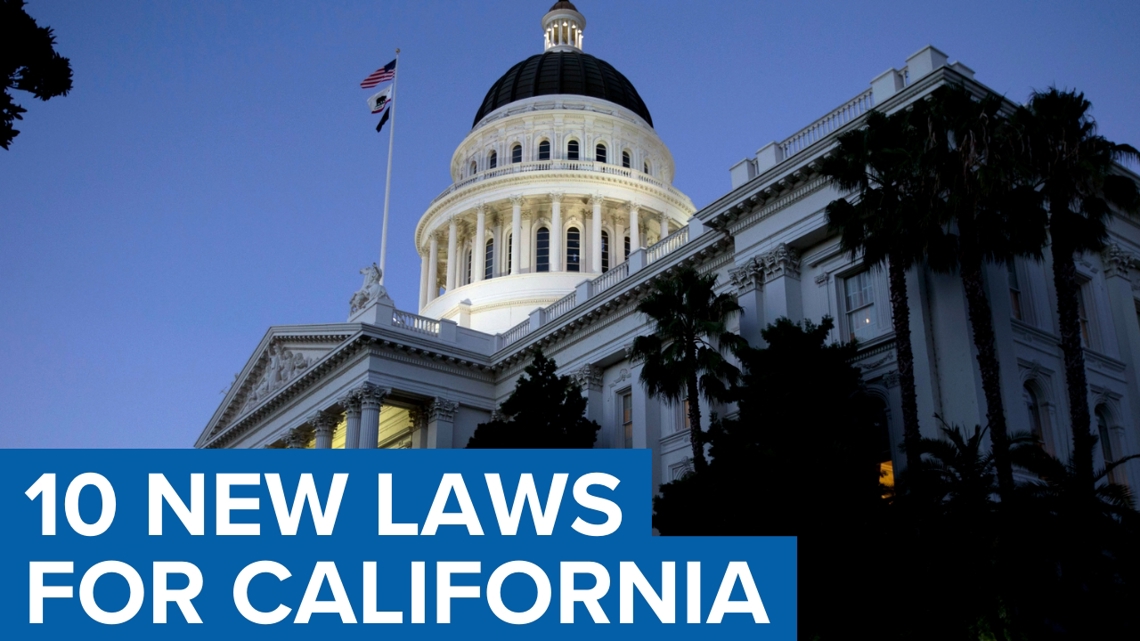
The Golden State’s Legal Crucible: Navigating California’s Influential Laws
California, often dubbed the "Golden State," is more than just a geographic marvel of sun-drenched beaches, towering redwoods, and technological innovation. It is also a legislative powerhouse, a vast and complex legal laboratory whose laws frequently ripple across the nation and even the globe. With a GDP that rivals the world’s fifth-largest economy and a population nearing 40 million, California’s policy choices are not merely local quirks; they are bellwethers, testaments to progressive ideals, and often, formidable challenges for businesses and residents alike.
Navigating California’s legal landscape is akin to traversing its diverse topography: from the high-tech corridors of Silicon Valley to the agricultural heartland, from bustling urban centers to serene natural reserves, each area presents unique challenges and opportunities that its laws seek to address. These laws, born from a blend of environmental consciousness, consumer protection advocacy, labor rights, and a pioneering spirit, embody the state’s ambitious vision for a better society, even as they sometimes attract criticism for their stringency and economic impact.
Environmental Vanguard: Pioneering Green Legislation

Perhaps no area showcases California’s legislative leadership more prominently than environmental protection. Decades before climate change became a global rallying cry, California was already setting the pace. The California Air Resources Board (CARB), established in 1967, is arguably the most powerful state-level environmental agency in the nation, often dictating emissions standards that other states adopt and that compel auto manufacturers to innovate.
"California has always been at the forefront of environmental policy," notes Mary Nichols, former Chair of CARB. "We’ve consistently pushed the envelope because we understand the urgency of protecting our natural resources and the health of our citizens. What California does today, the nation often does tomorrow."
This sentiment is reflected in landmark legislation like the Global Warming Solutions Act of 2006 (AB 32), which set aggressive targets for reducing greenhouse gas emissions, and subsequent laws aiming for 100% clean electricity by 2045. The state has also mandated the sale of electric vehicles, banned single-use plastic bags, and is a global leader in renewable energy deployment. These policies, while sometimes increasing costs for businesses, have spurred significant innovation in green technologies and created new industries, solidifying California’s role as an environmental vanguard.
The Digital Frontier: Shaping Tech and Privacy Laws
As the birthplace of Silicon Valley, California has a unique relationship with technology, and its laws reflect an ongoing attempt to balance innovation with public protection. The California Consumer Privacy Act (CCPA), enacted in 2018 and effective in 2020, stands as a monumental example. Often compared to Europe’s GDPR, the CCPA grants consumers unprecedented rights over their personal data, including the right to know what information companies collect, the right to delete it, and the right to opt-out of its sale.
The CCPA was a game-changer, forcing tech giants and countless other businesses to re-evaluate their data handling practices. Its influence has been profound; it catalyzed a wave of similar privacy legislation across other U.S. states and even influenced federal discussions. In 2020, California voters further strengthened these protections by passing Proposition 24, creating the California Privacy Rights Act (CPRA), which expanded the CCPA and established a dedicated privacy enforcement agency.
"The CCPA and CPRA represent a recognition that personal data is a valuable asset, and individuals deserve control over it," explains Alastair Mactaggart, the real estate developer who spearheaded the CCPA initiative. "California is demonstrating that strong privacy protections are not an impediment to innovation, but a necessary foundation for a trustworthy digital economy."
Labor and Employment: Progressive Protections and Gig Economy Debates

California’s commitment to worker rights is another defining characteristic of its legal framework. The state boasts some of the highest minimum wages in the nation, with many municipalities exceeding the state-mandated baseline. Beyond wages, California’s labor laws are extensive, covering everything from meal and rest breaks to stringent rules around overtime, independent contractor classification, and workplace safety.
One of the most contentious and widely discussed pieces of recent labor legislation is Assembly Bill 5 (AB 5), passed in 2019. This law codified and expanded the "ABC test" for determining whether a worker is an employee or an independent contractor, making it significantly harder for companies to classify workers as contractors. The stated aim was to protect workers in the burgeoning gig economy, ensuring they receive benefits like minimum wage, overtime, and unemployment insurance.
AB 5 sent shockwaves through industries reliant on independent contractors, from ride-sharing and delivery services to freelance writers and musicians. Companies like Uber and Lyft fiercely resisted, arguing the law threatened their business models and the flexibility preferred by many workers. This culminated in Proposition 22, a ballot initiative funded by gig companies that exempted them from AB 5, creating a unique carve-out for app-based drivers, which itself has faced legal challenges.
"AB 5 was a bold attempt to bring modern worker protections to the 21st-century economy," says Lorena Gonzalez, the former Assemblywoman who authored the bill. "While the implementation has been complex, the core principle remains: workers deserve fundamental rights, regardless of how they are hired." This ongoing saga highlights California’s willingness to grapple with complex economic shifts through legislative action, even if it sparks intense debate.
Housing Crisis and Legislative Responses
California’s allure comes with a significant drawback: an acute and persistent housing crisis. Skyrocketing home prices and rents have made the state largely unaffordable for many, driving an exodus of residents and exacerbating homelessness. The median home price in California routinely hovers around double the national average, exceeding $800,000 statewide.
In response, the state legislature has passed a flurry of laws aimed at increasing housing supply and protecting tenants. Rent control, long a contentious issue, saw a statewide expansion with AB 1482 in 2019, limiting annual rent increases to 5% plus inflation for most properties. More recently, laws like SB 9 and SB 10 have attempted to tackle restrictive single-family zoning by allowing homeowners to build duplexes or even small multi-unit dwellings on lots previously reserved for one home, and streamlining the approval process for larger developments near transit.
These legislative efforts face an uphill battle against entrenched local opposition, complex environmental review processes, and the sheer scale of the housing deficit. Yet, they underscore the state’s recognition of the crisis and its commitment to finding solutions, however incremental.
Consumer Protection and Public Health
Beyond these major areas, California’s legal framework is also characterized by robust consumer protection and public health regulations. The Safe Drinking Water and Toxic Enforcement Act of 1986, better known as Proposition 65, is a prime example. This law requires businesses to provide clear warnings about significant exposures to chemicals that cause cancer or birth defects.
Walk into almost any building or restaurant in California, or pick up a product, and you’ll likely encounter a Prop 65 warning. While often criticized for its ubiquity and sometimes vague language, leading to "over-warning," its intent is to empower consumers with information and incentivize businesses to reduce or eliminate harmful chemicals from their products and processes. It’s a unique Californian approach to public health that has undoubtedly influenced product formulations and environmental practices far beyond its borders.
The "California Effect" and its Criticisms
The influence of California’s laws is so pervasive it has earned the moniker "The California Effect." This phenomenon describes how the state’s stringent regulations, due to its massive market size, often become de facto national or even international standards. Manufacturers find it more cost-effective to produce one version of a product that meets California’s higher standards rather than separate versions for different markets.
However, this pioneering spirit comes with its share of criticisms. Businesses often lament the high cost of compliance, the complexity of regulations, and the litigious environment. Opponents argue that California’s laws contribute to its high cost of living, stifle economic growth, and drive businesses and residents to other, less regulated states. The "exodus" narrative, though often oversimplified, reflects a genuine concern among some about the cumulative burden of California’s regulatory regime.
For instance, the sheer volume and detail of environmental impact reports required for development projects, or the specific wage and hour compliance demands for employers, can be daunting for small businesses. Critics suggest that while the intentions behind these laws are noble, their practical application can sometimes create unintended barriers to entry and growth.
Conclusion
California’s legal landscape is a reflection of its identity: ambitious, forward-thinking, and perpetually in motion. From leading the charge on climate action and digital privacy to grappling with the complexities of the gig economy and an acute housing crisis, the state consistently pushes the boundaries of what state law can achieve.
These laws, whether celebrated for their progressive ideals or criticized for their economic impact, undeniably shape not just the lives of Californians but also influence policy debates and market practices across the nation and beyond. As California continues to innovate and adapt to new challenges, its legal crucible will undoubtedly remain a fascinating and influential force, forever shaping the Golden State’s future and often, the future of the world.


